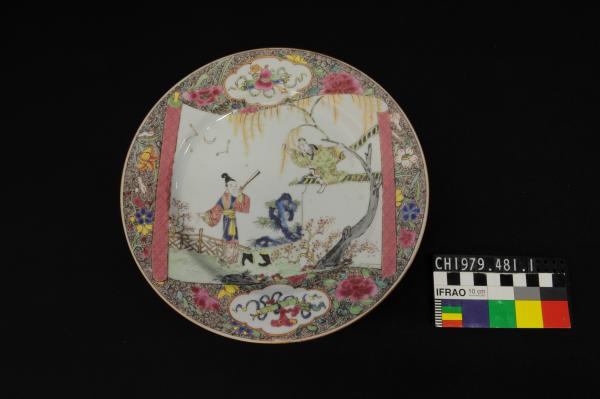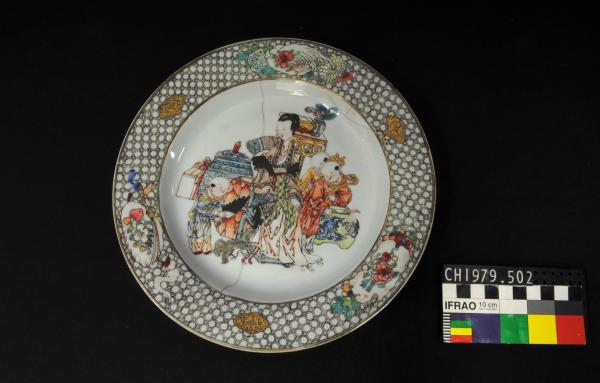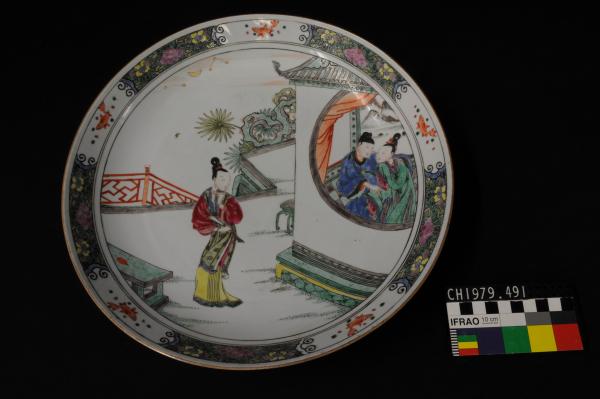SAUCER DISH
CH1979.486
"...decorated with crimson & yellow flowers on a leaf shaped reserve laid on a background of brown curl work and white blossoms." Slightly gilt on brown leaves. Gulland (1911:117): "Plates as used by the Chinese themselves ha no rims, but are saucer -shaped, some being deep and some shallow, called "dishes", or "saucer dishes" ...Collectors may have a preference for dishes, partly because of the old belief that the Chinese did not export their best wares, and therefore that more care was taken in the manufacture and decoratio of their home shapes, and partly perhaps to the fact that plates were not mad in China till such time as the Chinese commenced to make foreign shapes in fulfilment of European orders; but that is so long ago that it should not weig nowadays. In the later times, there can be no doubt just as good work was put the plate as on the dish...". Ann Roberts: A ' famille-rose' saucer dish, the centre with flower sprays within a leaf-shaped panel outlined in green and reserved on a sepia-scroll ground strewn with prunus and bamboo.
Department:
History DepartmentCollection
| Accession Number: | CH1979.486 |
|---|---|
| Accession Date: | 1 Nov 1979 |
Material
| Porcelain/Ceramic | porcelain |
|---|
Measurement
| height | 38mm |
|---|
| diameter | 246mm |
|---|
The WA Museum is in the process of digitising its collections. This record may not have been reviewed by curatorial staff and may be inaccurate or incomplete. Research departments are continually working on these collections by adding new objects and reviewing existing content when new information is made available.
Enquiries can be emailed to reception@museum.wa.gov.au
Cite this page
Western Australian Museum Collections https://museum.wa.gov.au/online-collections/content/CH1979.486
Accessed 21 Aug 2024
Rights
We support the open release of data and information about our collections.
Text content on this page is licensed under a Creative Commons Attribution 4.0 International License.
Image content on this page is copyright WA Museum.





